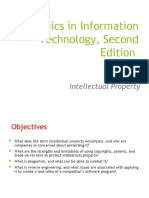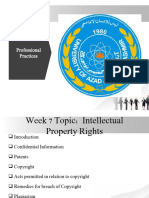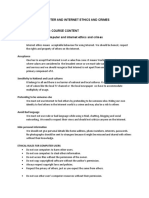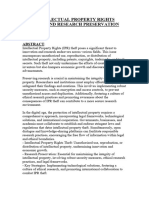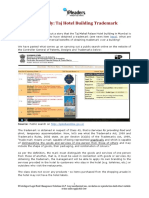0% found this document useful (0 votes)
31 views10 pagesbs7 2nd Term Wk11 Computing
The document outlines weekly lesson notes for a B7 Computing class, focusing on information security and intellectual property rights. It details activities for learning, including discussions on key principles of information security such as confidentiality, integrity, and availability, as well as legal issues surrounding intellectual property. The lesson also emphasizes the importance of copyright laws and the consequences of infringement.
Uploaded by
Eben EllisonCopyright
© © All Rights Reserved
We take content rights seriously. If you suspect this is your content, claim it here.
Available Formats
Download as DOC, PDF, TXT or read online on Scribd
0% found this document useful (0 votes)
31 views10 pagesbs7 2nd Term Wk11 Computing
The document outlines weekly lesson notes for a B7 Computing class, focusing on information security and intellectual property rights. It details activities for learning, including discussions on key principles of information security such as confidentiality, integrity, and availability, as well as legal issues surrounding intellectual property. The lesson also emphasizes the importance of copyright laws and the consequences of infringement.
Uploaded by
Eben EllisonCopyright
© © All Rights Reserved
We take content rights seriously. If you suspect this is your content, claim it here.
Available Formats
Download as DOC, PDF, TXT or read online on Scribd
/ 10











































